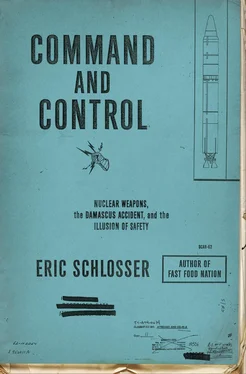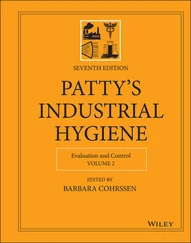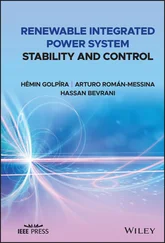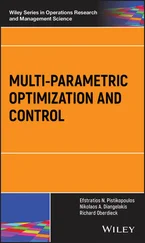SRAM — Short-Range Attack Missile, a missile with a nuclear warhead, launched from the air to hit targets on the ground, that was carried mainly by B-52 bombers, from the early 1970s until 1993
TAC — Tactical Air Command, the organization that from 1946 until 1992 was responsible for the ground support fighter planes of the U.S. Air Force
TACAMO — Take Charge and Move Out, a communications system created by the U.S. Navy that uses aircraft to transmit a nuclear attack order during an emergency
TASS — Telegraphic Agency of the Soviet Union (Telegrafnoe Agentstvo Sovetskogo Soyuza), the official news agency of the Soviet government
TATB — 1,3,5-triamino-2,4,6-trinitrobenzene, an “insensitive” high explosive that cannot easily be detonated by fire, shock, or impact
USAAF — United States Army Air Forces, the organization responsible for America’s land-based bombers during the Second World War
USAF — United States Air Force, the new and independent armed service that replaced the USAAF in 1947
WSEG — Weapon Systems Evaluation Group, a high-level research unit, employing both military and civilian personnel, that from 1948 until 1976 advised the Joint Chiefs of Staff
WWMCCS — World Wide Military Command and Control System, an organization formed during the Kennedy administration to combine the sensors, computers, command posts, and communications networks of the different armed services into a single centralized system
ZI — Zone of the Interior, a phrase used by the military to describe the continental United States
On September 18, 1980, at about six thirty in the evening, Senior Airman David F. Powell and Airman Jeffrey L. Plumb walked into the silo at Launch Complex 374-7, a few miles north of Damascus, Arkansas. They were planning to do a routine maintenance procedure on a Titan II missile. They’d spent countless hours underground at complexes like this one. But no matter how many times they entered the silo, the Titan II always looked impressive. It was the largest intercontinental ballistic missile ever built by the United States: 10 feet in diameter and 103 feet tall, roughly the height of a nine-story building. It had an aluminum skin with a matte finish and U.S. AIR FORCE painted in big letters down the side. The nose cone on top of the Titan II was deep black, and inside it sat a W-53 thermonuclear warhead, the most powerful weapon ever carried by an American missile. The warhead had a yield of 9 megatons — about three times the explosive force of all the bombs dropped during the Second World War, including both atomic bombs.
Day or night, winter or spring, the silo always felt the same. It was eerily quiet, and mercury vapor lights on the walls bathed the missile in a bright white glow. When you opened the door on a lower level and stepped into the launch duct, the Titan II loomed above you like an immense black-tipped silver bullet, loaded in a concrete gun barrel, primed, cocked, ready to go, and pointed at the sky.
The missile was designed to launch within a minute and hit a target as far as six thousand miles away. In order to do that, the Titan II relied upon a pair of liquid propellants — a rocket fuel and an oxidizer — that were “hypergolic.” The moment they came into contact with each other, they’d instantly and forcefully ignite. The missile had two stages, and inside both of them, an oxidizer tank rested on top of a fuel tank, with pipes leading down to an engine. Stage 1, which extended about seventy feet upward from the bottom of the missile, contained about 85,000 pounds of fuel and 163,000 pounds of oxidizer. Stage 2, the upper section where the warhead sat, was smaller and held about one fourth of those amounts. If the missile were launched, fuel and oxidizer would flow through the stage 1 pipes, mix inside the combustion chambers of the engine, catch on fire, emit hot gases, and send almost half a million pounds of thrust through the supersonic convergent-divergent nozzles beneath it. Within a few minutes, the Titan II would be fifty miles off the ground.
The two propellants were extremely efficient — and extremely dangerous. The fuel, Aerozine-50, could spontaneously ignite when it came into contact with everyday things like wool, rags, or rust. As a liquid, Aerozine-50 was clear and colorless. As a vapor, it reacted with the water and the oxygen in the air and became a whitish cloud with a fishy smell. This fuel vapor could be explosive in proportions as low as 2 percent. Inhaling it could cause breathing difficulties, a reduced heart rate, vomiting, convulsions, tremors, and death. The fuel was also highly carcinogenic and easily absorbed through the skin.
The missile’s oxidizer, nitrogen tetroxide, was even more hazardous. Under federal law, it was classified as a “Poison A,” the most deadly category of manmade chemicals. In its liquid form, the oxidizer was a translucent, yellowy brown. Although not as flammable as the fuel, it could spontaneously ignite if it touched leather, paper, cloth, or wood. And its boiling point was only 70 degrees Fahrenheit. At temperatures any higher, the liquid oxidizer boiled into a reddish brown vapor that smelled like ammonia. Contact with water turned the vapor into a corrosive acid that could react with the moisture in a person’s eyes or skin and cause severe burns. When inhaled, the oxidizer could destroy tissue in the upper respiratory system and the lungs. The damage might not be felt immediately. Six to twelve hours after being inhaled, the stuff could suddenly cause headaches, dizziness, difficulty breathing, pneumonia, and pulmonary edema leading to death.
Powell and Plumb were missile repairmen. They belonged to Propellant Transfer System (PTS) Team A of the 308th Strategic Missile Wing, whose headquarters was about an hour or so away at Little Rock Air Force Base. They’d been called to the site that day because a warning light had signaled that pressure was low in the stage 2 oxidizer tank. If the pressure fell too low, the oxidizer wouldn’t flow smoothly to the engine. A “low light” could mean a serious problem — a rupture, a leak. But it was far more likely that a slight change in temperature had lowered the pressure inside the tank. Air-conditioning units in the silo were supposed to keep the missile cooled to about 60 degrees. If Powell and Plum didn’t find any leaks, they’d simply unscrew the cap on the oxidizer tank and add more nitrogen gas. The nitrogen maintained a steady pressure on the liquid inside, pushing downward. It was a simple, mundane task, like putting air in your tires before a long drive.
Powell had served on a PTS team for almost three years and knew the hazards of the Titan II. During his first visit to a launch complex, an oxidizer leak created a toxic cloud that shut down operations for three days. He was twenty-one years old, a proud “hillbilly” from rural Kentucky who loved the job and planned to reenlist at the end of the year.
Plumb had been with the 308th for just nine months. He wasn’t qualified to do this sort of missile maintenance or to handle these propellants. Accompanying Powell and watching everything that Powell did was considered Plumb’s “OJT,” his on-the-job training. Plumb was nineteen, raised in suburban Detroit.
Although an oxidizer low light wasn’t unusual, Air Force technical orders required that both men wear Category I protective gear when entering the silo to investigate it. “Going Category I” meant getting into a Rocket Fuel Handler’s Clothing Outfit (RFHCO) — an airtight, liquidproof, vaporproof, fire-resistant combination of gear designed to protect them from the oxidizer and the fuel. The men called it a “ref-co.” A RFHCO looked like a space suit from an early-1960s science fiction movie. It had a white detachable bubble helmet with a voice-actuated radio and a transparent Plexiglas face screen. The suit was off white, with a long zipper extending from the top of the left shoulder, across the torso, to the right knee. You stepped into the RFHCO and wore long johns underneath it. The black vinyl gloves and boots weren’t attached, so the RFHCO had roll-down cuffs at the wrists and the ankles to maintain a tight seal. The suit weighed about twenty-two pounds. The RFHCO backpack weighed an additional thirty-five and carried about an hour’s worth of air. The outfit was heavy and cumbersome. It could be hot, sticky, and uncomfortable, especially when worn outside the air-conditioned silo. But it could also save your life.
Читать дальше












